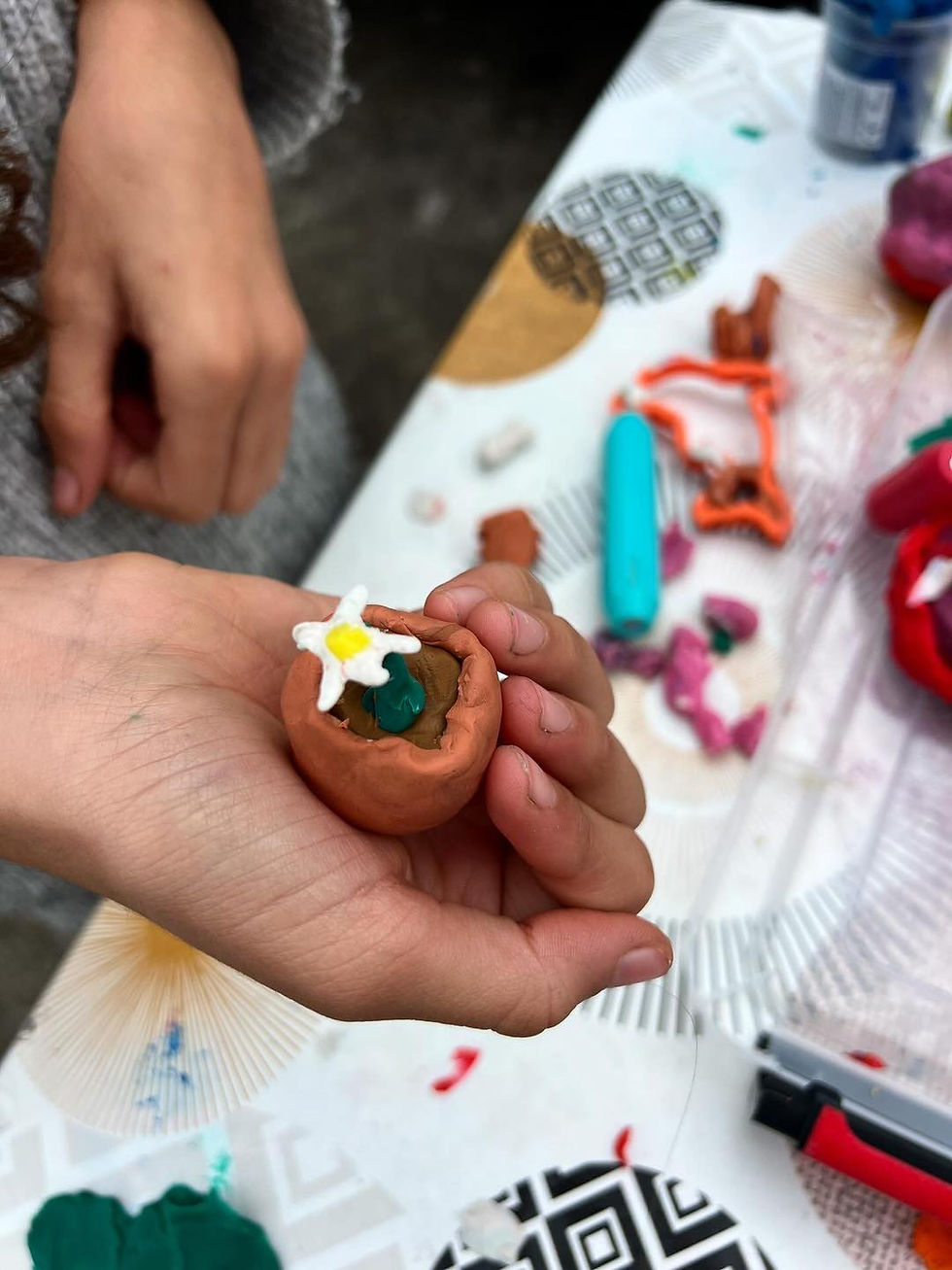Flying kites, unravelling knots
- Art Refuge

- Apr 22, 2016
- 3 min read

The team this week was Bobby Lloyd, Naomi Press and Miriam Usiskin, joined by Julie Cigman, early years’ educationalist with an interest in working with new arrival children in the UK.
THURSDAY We were once again struck by the challenges of location and structure of the Medecins du Monde psychosocial area which sits in the south of the camp at the edge of the road with open doors to the spacious tent but the area fenced off to the ‘wasteland’. Throughout the 5 hour session the space was visited predominantly by a number of Afghani men and teenage boys newly arrived to Calais, as well as some young men from Sudan later in the afternoon. Kite-making, marking routes on the large map and images of home, dominated the session.
Several men communicated fragments of their journey, such as the terrifying boat trip from Libya, one man described being in water for hours before being rescued. The map and mapping once again offered a valuable tool for marking out these journeys at people’s own pace, some spending hours in the space before making anything at all. A kite made out of a map of France flew beautifully until crashing back onto the ‘wasteland’.
FRIDAY Many people returned to the Hummingbird Space from yesterday. This was a session for literally tying and untying knots. Kite making and attempts at flying were the main themes for the day, complicated by spiralling winds, making a sustained soaring flight into the sky hard, but not impossible, to achieve.
We were joined today by Clemence, a French art therapy trainee from MdM who commented on the lack of walls in the tent where she works in Dunkirk and the usefulness of walls in the Hummingbird space which can offer physical support for image-making. The roof was repaired during the session with the hammering of nails outside echoing the working atmosphere inside. The day’s session also took place against a backdrop of football matches up on the new sand-prepared football pitch.
On outreach into the north part of the camp we had earlier come across a stretch of sand with a broken fence being protected by two policemen; on Thursday evening we had discovered, to our dismay, that the beach has been fenced off from public use with a high green fence and locked gate, making any access to the sea front impossible. We also witnessed people queuing for food, today reminding us of images of 1930’s breadlines. The pools of stagnant water are growing in number and the overcrowding is distressing, along with abandoned mattresses and burnt-out huts.
How do we support people in this place to begin to unravel the immensity of the challenges that face them?
Today’s kites were made from road maps and were the main activity led by the men from Iran and Afghanistan – competitiveness giving way to collaboration. Small kites proved to work better whilst the larger kites got heavier – taped down, and struggling to fly much above the ground. The process of making involved building, cooperation, and absorption. A small kite was handed to Miriam as a gift. At the end of the day two boys aged 8 and 10 joined us and one managed to fly a two stringed kite with skill and patience – a father looking on.



Comments